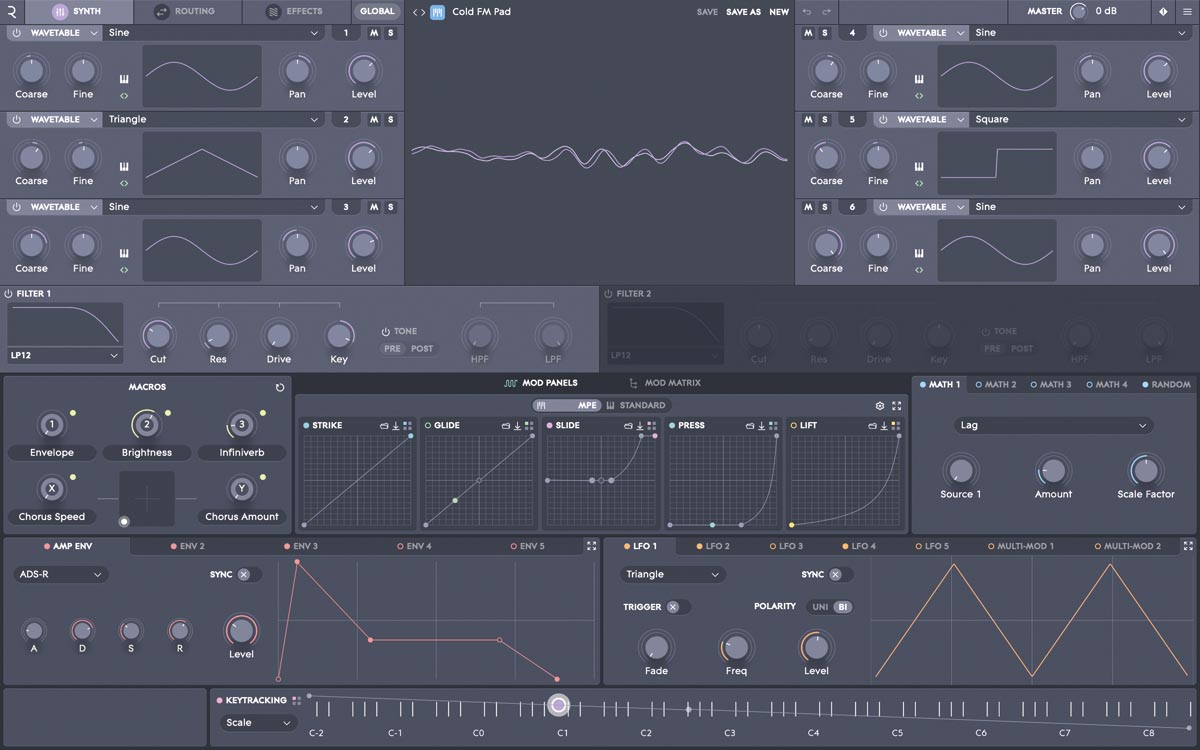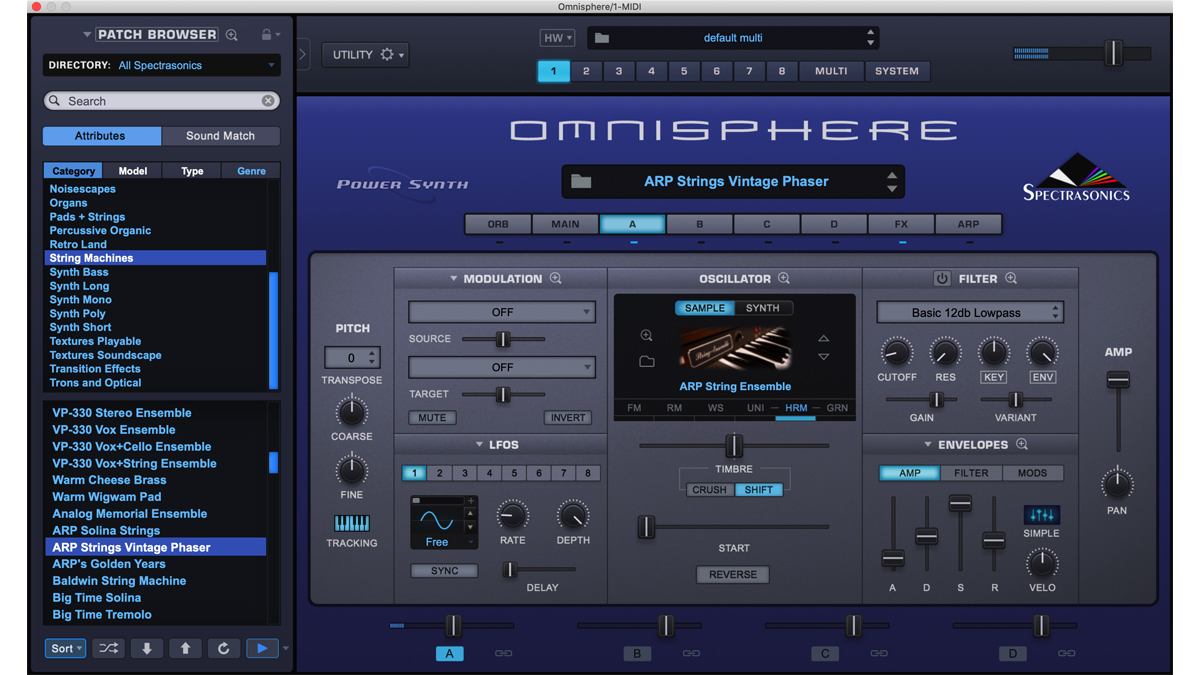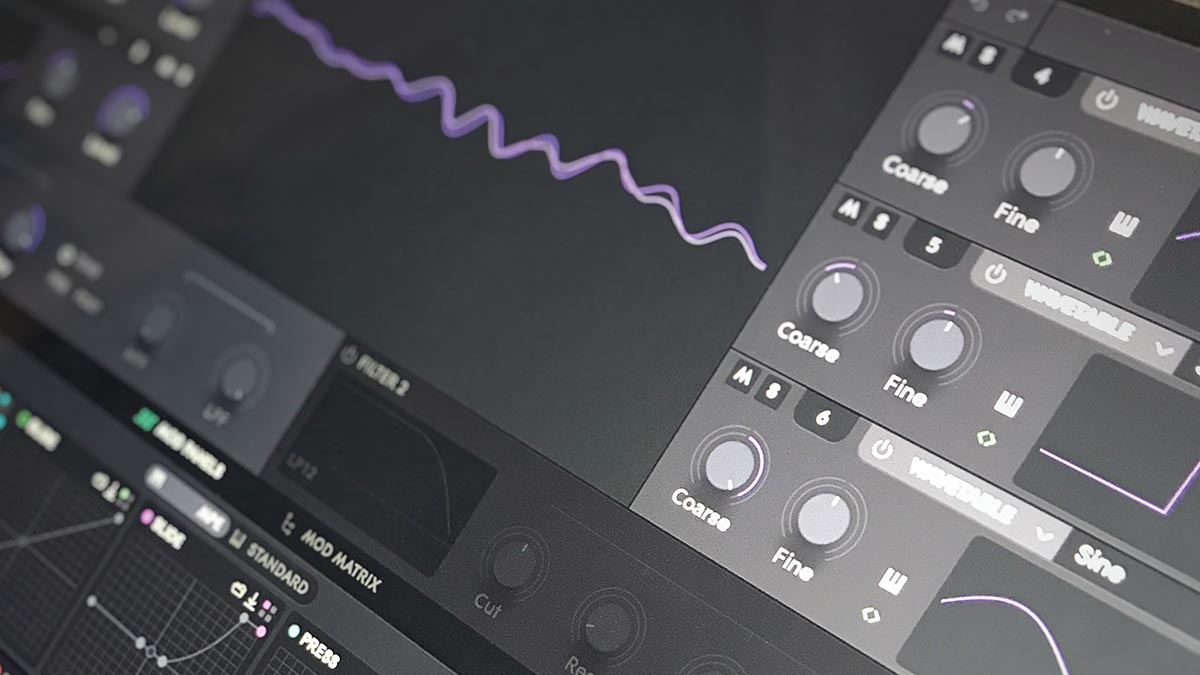MusicRadar Verdict
Equator 2 goes toe-to-toe with any ‘super synth’ on the market, and makes a very convincing case for the power of MPE.
Pros
- +
Powerful, well-rounded sound engine.
- +
Well-curated library of stock samples and presets.
- +
Modulation and expression tools are second to none.
Cons
- -
Some elements aren’t the most intuitive.
- -
Can’t easily move sample library to an external hard drive.
MusicRadar's got your back
What is it?
Equator started life as a mostly sample-focused sound engine for use with UK brand Roli’s distinctive Seaboard MPE controllers – modern, silicon-topped keyboard controllers designed for nuanced polyphonic modulation of pitch and timbre.
Across subsequent updates though, Equator has evolved into a powerful softsynth in its own right. However, while version one of Equator was impressive, this second iteration is a noticeable step-up.
Described as able to “go head-to-head with the best sound engines and plugins in the world”, its feature set aptly reads like a ‘best of’ of the ideas being punted in the current softsynth arms race.

As is standard these days, Equator is equipped with a range of oscillator modes, offering wavetable, granular, virtual analogue, samples and noise generators. There is a multitude of filter options too.
In a nice touch, somewhat reminiscent of Kilohearts Phase Plant, Equator 2 offers filter/waveshaper slots attached to each oscillator, along with global filters and plenty of flexibility on routing.
Performance and verdict
Modulation ranges from the standard – but flexible – envelopes and LFOs, through to Multi-Mod generators that can be used to design custom modulation envelopes. There are keytracking, maths, random and macro tools too.
For routing, there is a powerful mod matrix – with a slightly slicker and easier-to-use design than Equator’s stable-mates Strobe 2 and Cypher 2 – which allows for custom transfer curves to be set up, refining the response of modulation routings.
The synth engine is rounded out by a multi-slot, flexible effects section stocked with an extensive array of lovely-sounding processors capable of tasks ranging from subtle shaping and enhancement to far-out creativity. As a sound engine then, yes, it can go toe-to-toe with the Phase Plants, Pigments, and Massive Xs of the software world.

That’s not to say, however, that Equator 2 has no USP. While MPE control is by no means the be-all and end-all here, an emphasis on expression still informs much of the synth design.
When used in MPE mode, Equator 2 offers custom transfer shapers for tailoring and routing how the five ‘dimensions’ sent from a Roli-style MPE controller modulate the synth’s sound engine.

• Spectrasonics Omnisphere 2 review
Ultimately, Omnisphere 2 is a tremendous follow-up that takes the synth to the next level and beyond. If being at the cutting edge of sound design appears anywhere on your list of music production priorities, it's an instrument that you simply have to own.
In non-MPE mode though, similar tools can be used for shaping monophonic aftertouch, pitchbend and modulation inputs, meaning Equator 2 is equally excellent for nuanced performance using a standard MIDI controller.
Sonically, much of the character comes from the library of stock sample material. This includes wavetables and samples that touch on acoustic instruments, vintage synths and oddball textures, and includes a number of round-robin sounds for added authenticity.
While it’s not exactly Omnisphere in size, the selection is excellent, making Equator 2 particularly good for sounds that blend ‘real’ timbres and instruments with synthesised tones.
When driven by a Seaboard, Linnstrument or other ‘expressive’ controller, the stellar presets here make an incredibly convincing case for the power of MPE, from emulating the nuances of orchestral instruments to ambient patches that let users modulate complex, evolving soundscapes just by holding down a chord. This really is an excellent update all round.
MusicRadar verdict: Equator 2 goes toe-to-toe with any ‘super synth’ on the market, and makes a very convincing case for the power of MPE.
Hands-on demos
Roli
The Sound Test Room
Specifications
- KEY FEATURES: Multi-mode software synth with wavetable, sample, granular, virtual analogue and noise engines.
- CONTENT DATA SIZE: 6.7GB. 1400+ presets. 579 MPE presets and 896 standard presets.
- FORMATS: Standalone, AU, VST3
- CONTACT: Roli
I'm the Managing Editor of Music Technology at MusicRadar and former Editor-in-Chief of Future Music, Computer Music and Electronic Musician. I've been messing around with music tech in various forms for over two decades. I've also spent the last 10 years forgetting how to play guitar. Find me in the chillout room at raves complaining that it's past my bedtime.
“Every one of them said yes without hesitation": Hank Marvin and Roger Taylor have just remade a '60s classic for charity
Do you know where your money goes when you buy a gig ticket? A new report breaks it down
“Every note counts and fits perfectly”: Kirk Hammett names his best Metallica solo – and no, it’s not One or Master Of Puppets










